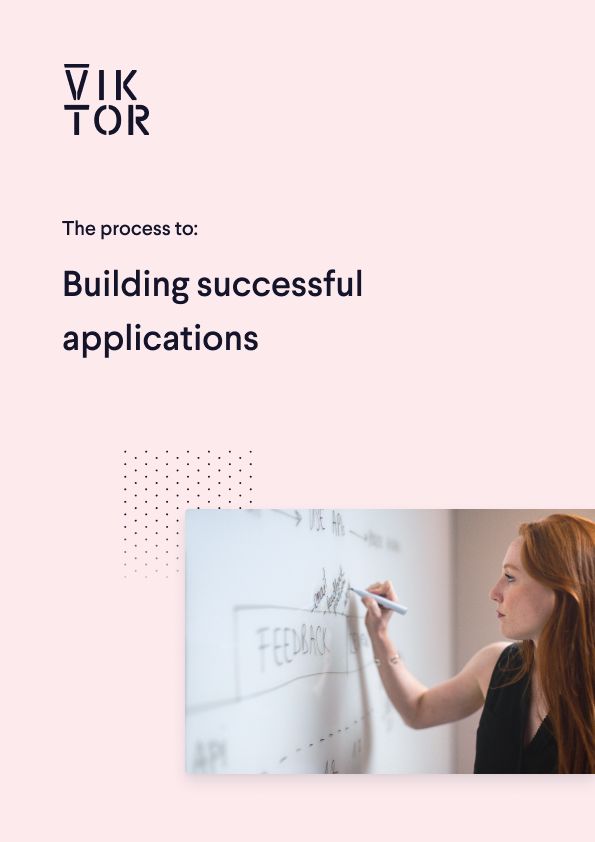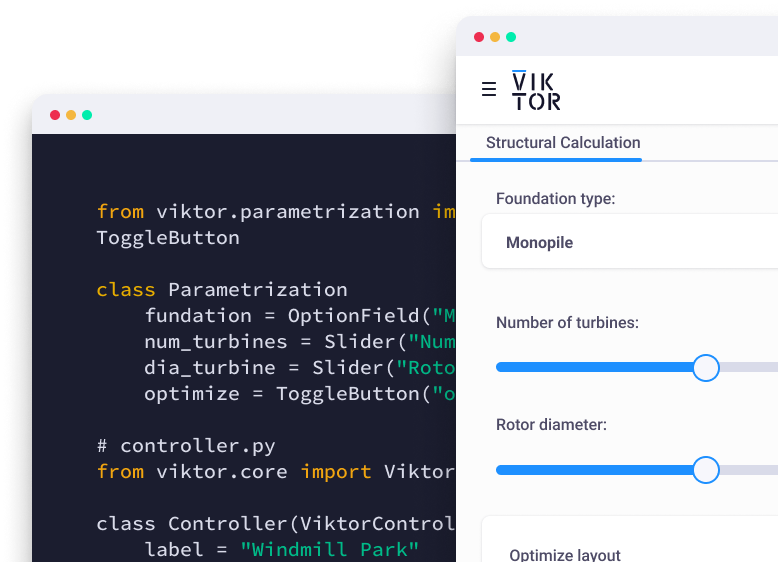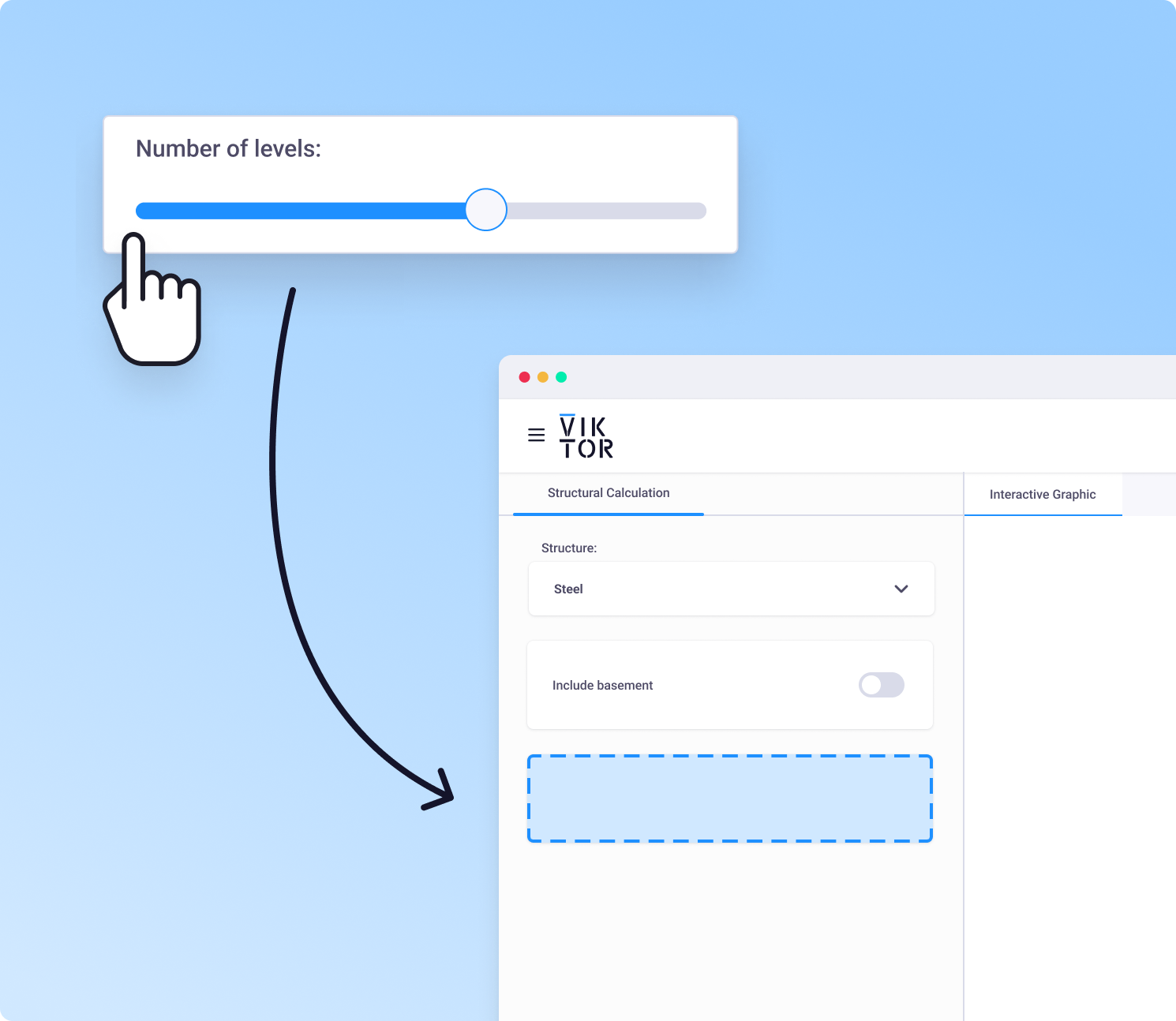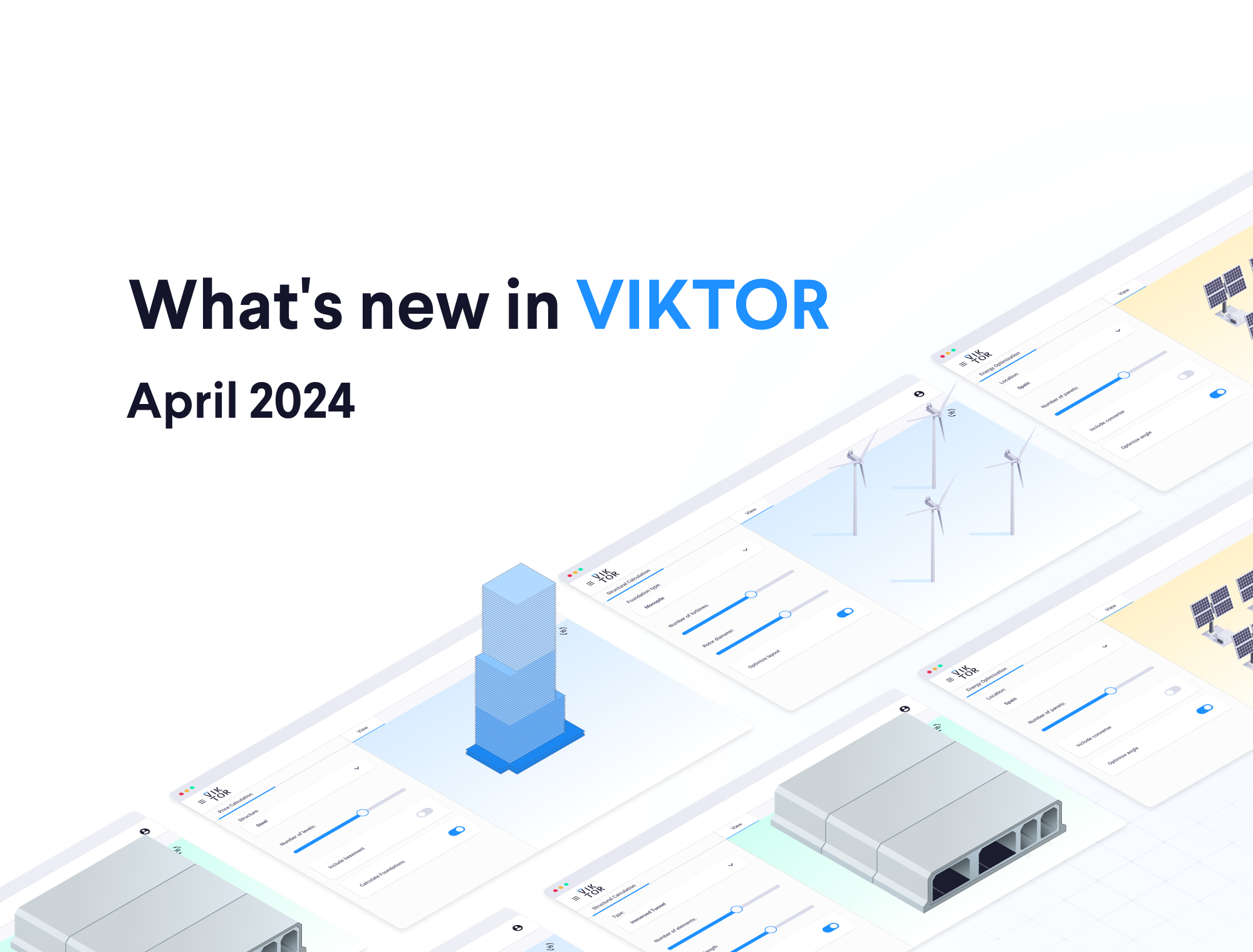3 tips to increase the adoption of your application
by VIKTOR


Build successful applications
Learn how you (developer, engineer, end-user, domain expert, project manager, etc.) can contribute to the creation of apps that provide real value to your work.
Tip 1: Work as a team
A good way to add more value to your application is by having clear communication and efficient collaboration between your team members, thus the product owner, domain experts, developers, and the end-users.
Here are some tips you can use to boost teamwork to make the most out of your app:
-
Map your process in detail: Understanding your process in full detail is vital to a successful application. Bring all people involved together, create a workflow diagram, and discuss all the details. Give everyone enough time to speak. The greatest improvements often arise thanks to this process.
-
Bring developers and end-users together: Developers can't build a perfectly good and correct application that fulfills all end-user's wishes without talking to the end-users regularly. This is also true the other way around. If an end-user has a great idea for an application but is not able to talk to a developer about this, their ideas will never be considered in the first place. Doing everything through an issue board does not lead to the best results. Instead, bring everyone together so they can communicate directly.
-
Have independent testers: In parallel to your developments, you should have independent testers that test and provide feedback on the developed features. End-users that are experienced with your application may only think of advanced features. New people, however, bring new insights. For example: What is missing for people to have a quick start? You need both kinds of testers to create a great application that others will want to use.
-
*Create advocates: The best thing that can happen for the adoption of your application is having an enthusiastic end-user who wants to tell everyone the benefits of using your app. People like this do not simply show up in the blink of an eye but come from a close relation to the product throughout the whole process. After you find testers, help them to own this role. Think about how you can help, maybe it is as easy as simply inviting them to do a presentation or talking to their manager so they have more time for this process.
Tip 2: User-friendliness is key
It is simple: People will not use your application if it is unfriendly, no matter how wonderful the code in the background is. Don’t overcomplicate things. Less is more. Here are a few things to think about:
-
The workflow inside the app should be recognizable by the end-users. Try to emulate the current workflow as much as possible and include the same steps wherever you can.
-
It should be clear what an end-user is supposed to do to get results. Use clear descriptions for all elements that the end-user interacts with, such as the input fields. Provide additional info (wherever needed) using tooltips or other means.
-
The application should react/calculate fast otherwise people will lose interest and patience quickly. As a developer you can do a lot to your code to improve performance. Yes, sometimes calculations are just heavy, like running a FEM model. In that case, try to divide the fast parts of the calculations from the intensive ones. Maybe it is possible to at least show part of the results quickly?
-
Make your app robust and avoid the user getting errors. If they get it, make sure they have a clear error message that helps them make the app work again. There is nothing more annoying than having to solve 10 errors before getting any results.
Tip 3: People don’t like black boxes
We often hear that people don’t want to use an app because it is a ‘black box’. This is understandable. For example, put yourself in the shoes of an engineer who needs to use the application to calculate a bridge. He doesn’t know what the app is doing, but he is supposed to put his signature on the design without having any idea about all the calculations and processes behind it. Yeah, sure… we bet he prefers his old and trusted Excel sheet to do the work instead.
Here are some things you can do to help end users understand what is happening behind the scenes:
-
Use verified calculations. When looking into how to automate a workflow, you will discover that there are all kinds of spreadsheets that people have been using for years, and most importantly: That they trust. Avoid reinventing the wheel, just incorporating those same models into the app. It will give people more trust.
-
Show additional information that is relevant for the end-user and include intermediate results. Thus, don’t just give the final result but also include the information used to get there. For example, which material properties, geometry, and forces are used in the calculation? Maybe you could also generate a calculation report?
-
Make models available. Maybe the end-user does not need to know all the ins and outs of your code, as long as the calculation can be verified. For example, does the app optimize a design based on a FEM model or Excel sheet? Make it possible to download the final model/sheet, so that the end-users can check it independently.



